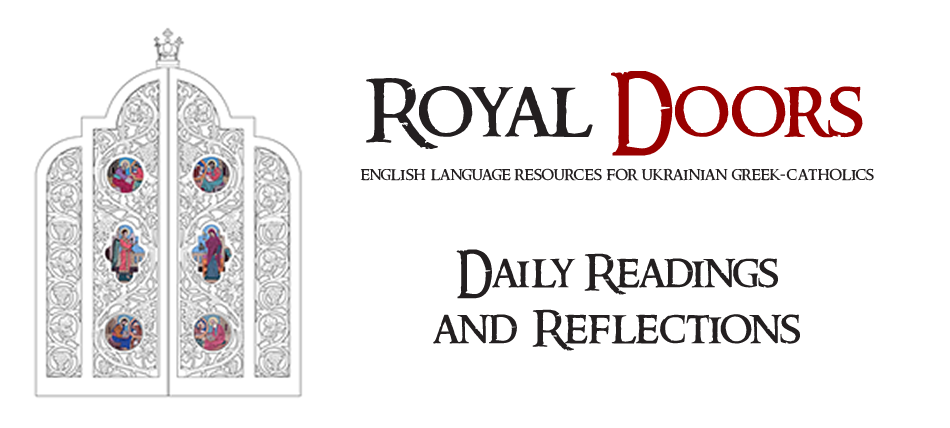by Brent Kostyniuk
At that time the disciples came to Jesus and asked, “Who, then, is the greatest in the kingdom of heaven?” He called a little child to him and placed the child among them. And he said: “Truly I tell you, unless you change and become like little children, you will never enter the kingdom of heaven” (Matthew 18:1-3).
How often have we heard these words and tried to apply them to ourselves, to our own lives? We can understand Jesus’ message that we need to have the unconditional trust and faith of children in accepting His teaching. However, there is more than simile in this passage. Jesus longed for children to come and be near Him.
Then people brought little children to Jesus for him to place his hands on them and pray for them. But the disciples rebuked them. Jesus said, “Let the little children come to me, and do not hinder them, for the kingdom of heaven belongs to such as these.” When he had placed his hands on them, he went on from there (Matthew 19:13-15).
As it was 2000 years ago, so it should be today. Just as Jesus encouraged children to be near Him as He taught, so should we welcome children into our churches, especially during the Divine Liturgy. Their presence reminds us of the need to be like them, in their simplicity of acceptance, if we are to reach our eternal goal.
Aside from the wisdom we may obtain from them, there are practical reasons for having children participate in the Divine Liturgy. They are, of course, the future of the Church. At my graduation ceremony from Newman Theological College, the then Dean of Theology, Fr. Stefano Penna, took my week old grandson from my daughter’s arms and proclaimed an ancient Italian adage. “A baby is God’s way of saying the world must continue.” As well, having received the three Sacraments of Initiation—Baptism, Chrismation and Holy Eucharist—children, however young, are full members of the Church. This means they may, and should, receive Holy Eucharist on a regular basis, even as infants. [Indeed, that is the teaching and practice of the UGCC.] The rationale for this is that from the beginning, the new Catholic will be able to fully participate in the life of the Church. For an infant, it begins a life-long association with Jesus, being able to receive Him regularly from the very start of life. If we truly believe in the spiritual nourishment the Holy Eucharist provides, then we must also believe that nourishment is efficacious no matter our age. At a baptism, a priest quipped, “If it’s good enough for the mom, it’s good enough for the baby!”
However, at times, children’s exuberance may be distracting to others seeking to focus their attention on the Divine Liturgy. Even at these times, children should not be removed from the congregation. As scripture tells us,
He took a little child whom he placed among them. Taking the child in his arms, he said to them, “Whoever welcomes one of these little children in my name welcomes me; and whoever welcomes me does not welcome me but the one who sent me” (Mark 9: 36-37).
Instead, use your children’s enthusiasm to discover the beauty of your church. In doing so, you may also make discoveries for yourself! That beauty has been an essential element of our Byzantine Tradition from its very beginning in 988. In the Chronicles, we read that Prince Volodymyr decided to proclaim an official state religion. Before making a choice, he sent emissaries to investigate various religions, including Islam, Judaism, and Christianity in both Eastern and Western forms. Arriving back, the emissaries reported, “…the Greeks led us to the edifices where they worship their God, and we knew not whether we were in heaven or on earth. For on earth there is no such splendor or such beauty.” Today we recall this event in the words of the Ambon Prayer. “O Lord, blessing those who bless You, and sanctifying those who trust in You, save Your people and bless Your inheritance, preserve the fullness of Your Church, sanctify those who love the beauty of Your house; glorify them in return by Your divine power, and do not forsake us who hope in You.”
There are many ways for you to make the Divine Liturgy a happy and productive time for your child. For example, did you know every Ukrainian Catholic church is protected by four angels? See if you can find them. Sometimes a change of view can be interesting; if your church has a balcony take your child there where they can see more of the church, rather than just the pew in front of them. In an unobtrusive manner, explore the icons which beautify the interior of your church. If there are stained glass windows depicting biblical events, the bright colours can be fascinating for young children. These activities will stand you in good stead as you teach your child about our faith. If you are not doing so already, sing the responses while holding your infant; one parishioner’s young daughter loved it, because she thought the singing was just for her!
To help keep little hands and minds busy purchase religious themed story books from your local Christian bookstore. When they are old enough, let your child place your donation in the collection plate or even donate a coin of their own. Similarly, when you light a votive candle, let your child help, then explain the significance of the act.
St. John Paul II proclaimed the Church should breathe through both lungs—East and West. Ukrainian Catholics are the inheritors of Eastern Christianity which we received as a nation over 1000 years ago. It is our duty to keep that Tradition alive and vital for future generations. We do that through our children.

